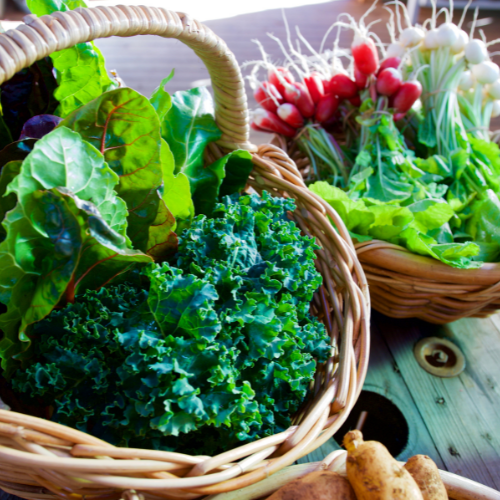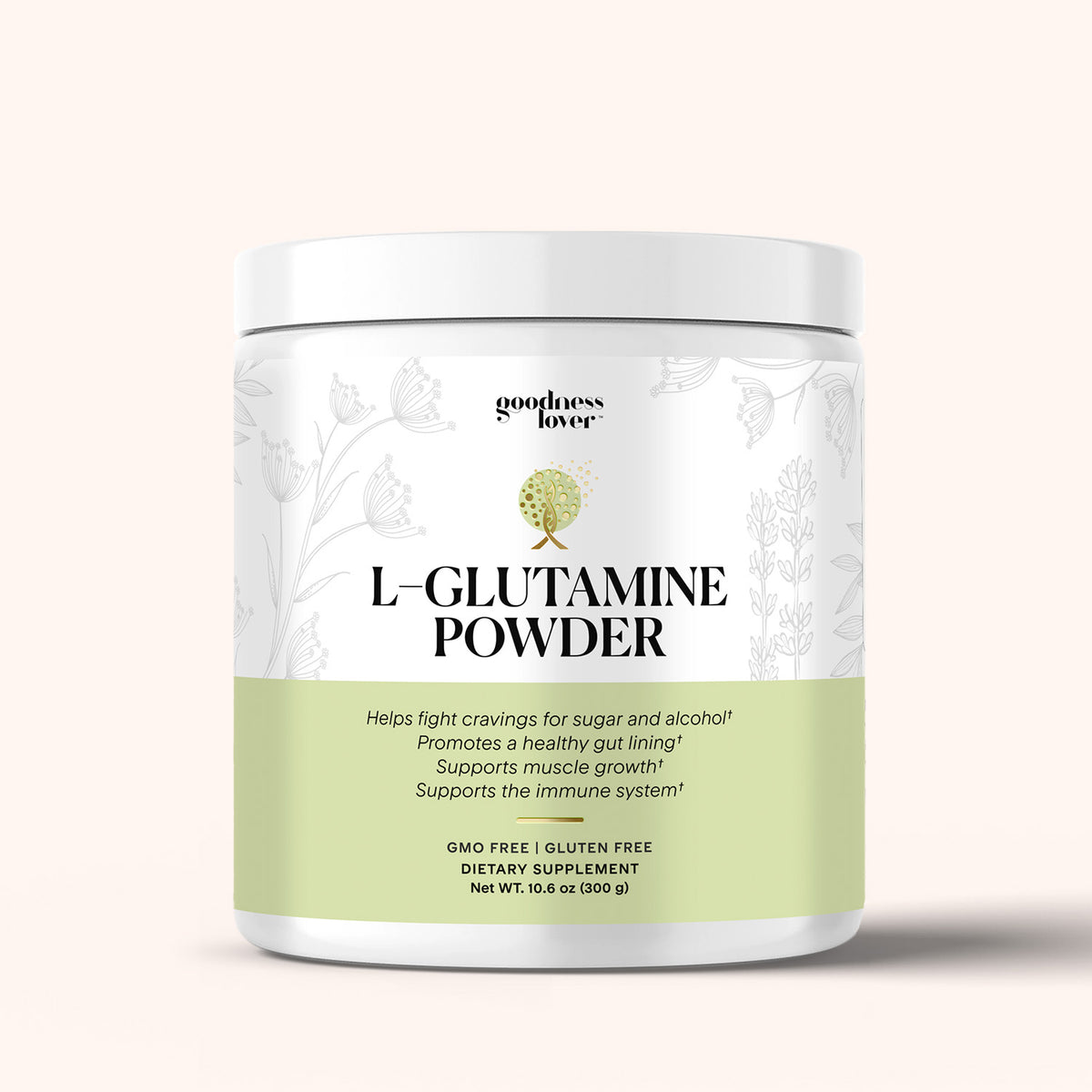Welcome back to our deep dive into the verdant world of leafy goodness. If you’ve been following along, you’ll remember that in part 1, we explored the astonishing health benefits of leafy green vegetables and why they should take a prime spot on your plate.
Now, am I right in saying we’re all eating our leafy greens every day, and we can all live happily long and ever after?
Hmm, we all know that that of course is not what is going on! In fact, many people might be lucky to get one serve of leafy greens per week and only because the burger they ordered had some spinach on it.
When it comes to incorporating more of these superfoods into our diet, we often forget, don’t know where to start, or struggle with a lack of know-how on sustaining a diet that consistently incorporates an abundance of greens.
In part 2 of Greenify Your Plate, we’re going to uncover creative ways to seamlessly incorporate these leafy legends into your diet. We’re going to touch on everything from how to select and store greens, to how to prepare greens to maximise both their nutrition and taste.
So, let’s embrace the leafy revolution and witness the transformative magic that unfolds when you make greens the shining stars of your meals.
Table Of Contents:
Types of Leafy Greens
Leafy greens encompass a diverse array of vegetables, each contributing a unique blend of flavors, textures, and, most importantly, a powerhouse of nutrients.
One of the most popular varieties is spinach renowned for its iron content and versatility in both raw and cooked dishes. Kale, a cruciferous green, boasts an impressive nutrient profile, including vitamins A, C, and K. Its robust flavor and sturdy texture make it a favorite for salads and smoothies.
Swiss chard graces the scene with an array of vibrant colors and a taste that strikes a balance between sweet and earthy. Arugula offers a peppery kick, elevating salads and sandwiches with its distinct bitter flavor. Its flavor also stimulates the production of digestive secretions to enhance nutrient absorption. Collard greens, endive, and radicchio also bring a hearty, slightly bitter taste.
Romaine lettuce offers a crisp texture, perfect for creating satisfying salads, while iceberg lettuce provides a refreshing crunch. Watercress, with its delicate leaves and peppery taste, is a nutrient-dense addition to salads and sandwiches.
The most commonly eaten leafy green vegetables include:
- Kale
- Spinach
- Collard greens
- Broccoli
- Broccoli sprouts
- Cabbage
- Beet greens
- Watercress
- Arugula
- Mustard greens
- Swiss chard
- Bok choy
- Romaine lettuce
Common Myths and Misconceptions
One common misconception surrounding leafy greens involves concerns about oxalates, naturally occurring compounds that can form crystals when combined with minerals like calcium. While oxalates have been associated with kidney stones, it's essential to recognize that the overall health benefits of consuming leafy greens far outweigh the potential risks for the majority of individuals.
The oxalate content varies among different greens, and a well-balanced diet can easily mitigate any concerns related to oxalates for most people. Also, using cooking methods that use water such as boiling or steaming, does a lot to reduce oxalate content. Pre-soaking your legumes and cooking them well is also effective.
Some individuals also express concerns about nutrient absorption inhibitors in leafy greens, worrying that they may interfere with the body's ability to absorb essential nutrients. However, the reality is quite the opposite. Leafy greens are rich in vitamins, minerals, and antioxidants, and their fiber content aids in digestion and nutrient absorption. The combination of various nutrients, such as vitamin C and iron, even enhances absorption.
 Buying, Storing and Washing Leafy Greens
Buying, Storing and Washing Leafy Greens
When selecting leafy greens, opt for those with fresh, crisp leaves and vibrant colors, steering clear of wilted or discolored options. Conduct the "sniff test," ensuring they have either no scent or emit an aroma consistent with the plant's characteristic taste.
Store unwashed greens in the refrigerator and wash and dry them just before use. Utilize produce bags or an airtight container, removing excess air, and keep them in the crisper drawer for optimal freshness.
Hardy varieties like kale and collards generally have a longer shelf life compared to lettuces or bok choy. For cabbages, they can endure in the fridge for an extended period, with a head potentially lasting several weeks in the crisper drawer.
Before consuming, it's a good idea to give them a thorough cleaning to bid farewell to any soil remnants and perhaps the occasional tiny companion bug. Notably, certain greens, such as spinach and kale, have earned a place on the Environmental Working Group's "Dirty Dozen," a list of the produce with the highest exposure to pesticides. Therefore, when shopping for these greens, opt for organic whenever possible.
Keep in mind that even organic produce can carry traces of pesticides, either from neighboring farms or due to the certification of "less problematic" organic pesticides. Consequently, making it a habit to wash all fresh greens before consumption is a wise practice. While a plain water rinse can tackle dirt and some pesticides, a more potent cleanser such as a baking soda solution is necessary for complete pesticide residue removal.
How To Get More Greens In Your Diet
Even for the most disciplined, eating enough leafy greens can be challenging some days. And for those of you who have kids who are fussy eaters, getting them to eat more greens can be an uphill battle every day.
Fortunately, green leafy veggies are versatile and can be incorporated into your meals in a number of different ways. Here are some ideas to get you started:
1. Make green salads a lunch staple
Make a big bowl of salad and add a variety of green leaves such as kale, romaine leaves, spinach, bok choy, arugula, and collard greens. Add other vegetables, legumes, nuts and seeds for flavor and increase your intake of nutrients and don’t forget a salad dressing of lemon, garlic, and olive oil to really enhance the flavor and make your lunch enjoyable.
2. Blend them into smoothies or make a green vegetable juice
Making a green smoothie for breakfast is one of the best ways you can start your day. This is because you can overload smoothies with a bunch of nutrients and you’ve already ticked lots of boxes for the day. Add in a cup or two of kale or spinach and combine with frozen banana or mango and you will hardly notice the flavor of the greens. Purchasing a greens powder supplement and adding 1-2 tsp to your smoothie is another easy way to boost your greens intake.
3. Add them to soup, stews, or curries
Adding leafy green vegetables to soup during the last few minutes of cooking is another great and easy way to increase your greens intake. Bok choy, kale, Swiss chard, and spinach are popular leafy green choices. A large handful will melt down to nearly nothing so you can add quite a bit. Broccoli is also another nice addition.
A note on boiling or steaming your greens:
Opt for steaming over boiling when you don't plan to use the cooking water, as it helps retain more nutrients in the greens rather than allowing them to leach into the water. However, if you intend to make soup, boiling greens becomes a suitable method, allowing you to consume the nutrients that transfer into the water.
4. Use dark leafy greens as wraps instead of tortillas or pita bread
Instead of using wraps, gluten-free or regular, try using dark leafy greens such as cabbage leaves or collard greens. For example, try filling a collard green leaf with hummus, grated carrot, cucumber, tomato, olives, and avocado and roll it like a burrito for a filling and nutrient-dense meal.
5. Sauté́ them with olive oil, garlic, salt, and pepper
Cook some chopped garlic first before adding the leafy greens. Bok choy, collard greens, dandelion greens, kale, mustard greens, spinach, and Swiss chard are popular choices. You can also emit the oil entirely and use water, broth, tamari, or coconut aminos to keep the veggies from sticking to the pan and burning. Sautéed leafy greens can be added to many dishes including grain bowls, casseroles, stews, stir-fries, or even as a topping on pizza.
6. Make delicious dips
Raw greens like arugula, basil, spinach and kale also make great dip ingredients. You can add them to a food processor or blender when making pesto, hummus and other kinds of dips.
7. Make kale chips
Another delightful way to enjoy kale is by making kale chips. Begin by washing, de-ribbing, and massaging the kale with your preferred seasonings. Once seasoned, you can either use a dedicated dehydrator or simply lay them out on baking trays in the oven for a couple of hours until they become crisp and flavorful kale chips.
8. Ferment your greens
Fermenting greens is a wonderful method to savor their flavors and enhance their nutritional profile. Consider crafting sauerkraut or kimchi using not only head cabbages but also leafy brassicas like bok choy and napa cabbage. The natural fermentation of vegetables not only adds a distinctive zing to your dishes but also introduces beneficial bacteria, making them a flavorful and nutritious snack for your gut.
9. Cook them in a dessert
One creative way of increasing your greens intake is to cook them into a dessert. There are ample dessert recipes on the internet that use green vegetables such as zucchini, broccoli, or spinach as one of the primary ingredients. This is a great way to encourage your kids to eat their daily greens too!
Eat Your Greens!
There you have it! No more need to feel overwhelmed when it comes to eating your greens. If you’re not one to love raw kale in a salad, pop it into your stew or even your dessert instead. Make a smoothie for breakfast every morning and sneak in a couple of leaves. Enjoy kale chips for a well-deserved afternoon snack. Soon you’ll not only be appreciating the way they make your tastebuds dance, but you’ll be also loving the way they make your body feel.
So starting today, make these leafy legends a priority as they will advance you on your journey to optimal health.
Four Leafy Green Recipes
Glowing Green Smoothie Bowl
Indulge in the vibrant goodness of a green smoothie bowl, a luscious blend of nutrient-packed spinach, kale, and creamy avocado. This bowl is not only a feast for your taste buds but also a powerhouse of health benefits. Spinach and kale, rich in vitamins A, C, and K, bolster your immune system, support bone health, and contribute to radiant skin. The addition of avocado brings a velvety texture and a dose of heart-healthy monounsaturated fats, promoting satiety and aiding in nutrient absorption. Together, these green wonders offer a refreshing and nourishing treat that fuels your body with essential vitamins, minerals, and antioxidants for a vibrant and energized day.
Serves 1.
Ingredients:
2 cups spinach
1 cup kale
1/2 avocado
1/2 cucumber
1/2 green apple
1 tbsp chia seeds
1 tbsp ground flaxseeds
1 cup almond milk
1-2 tablespoons erythritol (or other natural sweetener of choice)
Toppings: fresh berries, kiwi, nuts, seeds, pomegranate, coconut flakes
Directions:
- In a blender, combine the spinach, kale, avocado, cucumber, green apple, chia seeds, flaxseeds, almond milk, and erythritol or xylitol. Blend until smooth and creamy.
- Pour the smoothie mixture into a bowl and top with your favorite toppings. Enjoy immediately for the best texture and flavor.
Green Tea Matcha Smoothie
Elevate your smoothie game with this refreshing and vibrant Green Tea Matcha Smoothie! Harnessing the antioxidant-rich properties of matcha green tea powder, this blend features the potent EGCG (epigallocatechin gallate) to shield your body from oxidative stress and inflammation. Spinach and avocado contribute vital vitamins and nourishing fats for internal wellness. Almond milk and banana introduce creamy texture and natural sweetness, while a touch of natural sweetener enhances the guilt-free delight of this wholesome concoction.
Serves 1.
Ingredients:
1 cup almond milk
1 tsp matcha green tea powder
1 cup spinach
1/2 avocado
1 ripe banana, frozen
2 medjool dates
1/2 cup ice cubes
Directions:
- In a blender, combine the almond milk, matcha green tea powder, spinach, avocado, frozen banana, dates, and ice cubes. Blend until smooth and creamy.
- Taste and adjust the consistency as desired. If the smoothie is too thick, add a little more almond milk to reach your desired consistency.
- Pour the smoothie into a glass and enjoy immediately.
Brussels Sprouts and Lentil Salad 
This Brussels Sprouts and Lentil Salad is a powerhouse mix of ingredients that'll give you a natural glow from the inside out. With sulfur-containing foods like Brussels sprouts and onions, you'll activate enzymes that'll help your body detoxify while protecting those precious liver cells from nasty toxins. Add in some parsley and cilantro for extra chlorophyll goodness to bind and eliminate those pesky toxins from your system.
Serves 2-4.
Ingredients:
1 cup cooked quinoa
2 cups Brussels sprouts, halved
1 red onion, thinly sliced
2 cups mixed salad leaves
¼ cup chopped fresh parsley
¼ cup chopped fresh cilantro
¼ cup chopped walnuts
Juice of 1 lemon
2 tbsp extra virgin olive oil
1 tbsp apple cider vinegar
Salt and pepper, to taste
Directions:
- In a large mixing bowl, combine the cooked quinoa, Brussels sprouts, red onion, mixed salad leaves, fresh parsley, fresh cilantro, and walnuts.
- In a separate small bowl, whisk together the lemon juice, extra virgin olive oil, apple cider vinegar, salt, and pepper to create the dressing.
- Pour the dressing over the salad and toss until all the ingredients are well coated.
- Let the salad sit for a few minutes to allow the flavors to meld together.
- Serve the salad chilled or at room temperature.
Avocado and Spinach Pesto Pasta
Indulge in the goodness of our Avocado and Spinach Pesto Pasta. Creamy avocados and fresh spinach and basil come together to create a flavorful pesto that coats the pasta. With the addition of garlic, and pine nuts, every bite is a mix of delicious textures and tastes. Simple yet satisfying, this dish is perfect for a quick and tasty meal. Drizzle some olive oil and enjoy the straightforward goodness of this pasta.
Serves 2-3.
Ingredients:
8 oz gluten-free pasta (such as lentil or quinoa pasta)
1 ripe avocado
2 cups fresh spinach
1/4 cup fresh basil leaves
2 cloves garlic
1/4 cup pine nuts
1/4 cup olive oil
Salt and pepper, to taste
Optional: cherry tomatoes and lemon wedges for garnish
Directions:
- Cook the gluten-free pasta according to the package instructions. Drain and set aside.
- In a food processor, combine the avocado, spinach, basil, garlic, and pine nuts. Process until smooth.
- While the food processor is running, slowly drizzle in the olive oil until the sauce reaches a creamy consistency. Season with salt and pepper to taste.
- Toss the cooked pasta with the avocado-spinach sauce until well coated.
- Garnish with cherry tomatoes and lemon wedges if desired and serve immediately.
















What Do You Think? Comment Below: